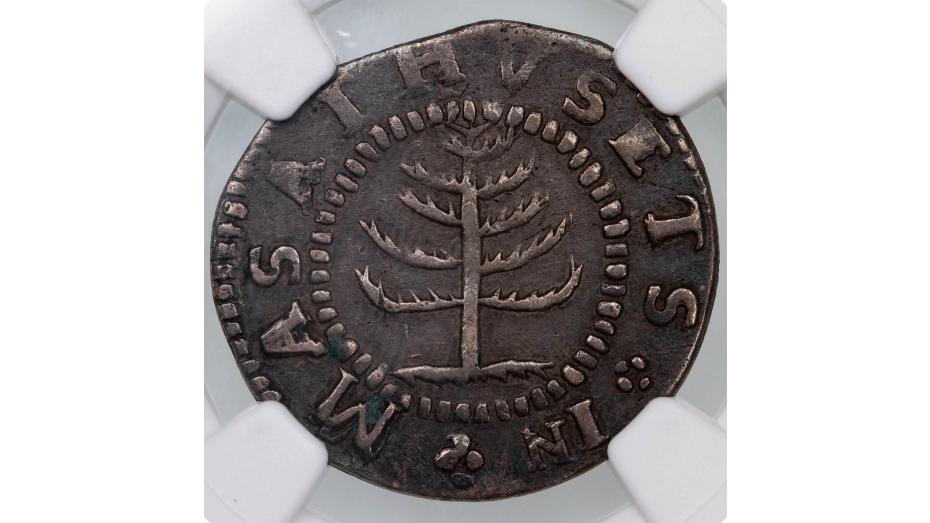The First Coin Struck in Massachusetts: 1652 Pine Tree Shilling
Though the United States has long held its status as a sovereign nation and global superpower, the country originated as 13 colonies governed by the British Crown for nearly two centuries. The Pine Tree Shilling, first struck over 350 years ago around 1670, allows us to venture into the past and take a deeper look at our nation’s origins.
The Pine Tree Shilling, which was the first coin struck in the Massachusetts Bay colony, was brought on by a currency shortage due to England’s failure to send funds to the New World. In dire need of alleviating the economic hardship of the coin shortage, the General Court of Massachusetts Bay authorized Bostonians John Hull and Robert Sanderson to establish the first mint in United States history.
Once permitted, Hull and Sanderson got to work and issued a set of Massachusetts Bay coinage consisting of threepences, sixpences, and shillings, all of which were struck from silver. The obverses of the Massachusetts coinage proudly boasted one of the colony’s imperative exports: the pine tree, used for building ships’ masts. Although the coins were struck in the 1670s, the reverses displayed the year “1652.” While many believe this was done to commemorate the founding of the Massachusetts Mint, it is speculated that it was actually a safeguard. The colonists were not permitted to strike their own coins under the monarchy. However, since England was a Republic with no King in 1652, the colonies would have been able to produce their own currency legally. So, in order to deny any illegal activity, the coins were backdated to 1652.
As soon as word got around of a new American legal tender, the Pine Tree Shilling became a tremendous hit and gained immense popularity. Its notoriety extended beyond the Massachusetts Bay Colony, as it was also used in various states across the Northeastern United States.
Unfortunately for the people of Massachusetts and the greater New England area, the Pine Tree Shilling’s popularity was incredibly short-lived. Once word got back to Britain that Massachusetts had begun circulating its own currency, the monarchy quickly abolished the Massachusetts Mint and all production of its currency accordingly stopped.
Though the Pine Tree Shilling no longer served as valid legal tender, it did find a new and certainly unexpected use. With the Salem Witch Trials in full swing near the end of the 17th century, Bay Staters dug up their old Shillings and began wearing them as necklaces as a charm to ward off witches. Why the people believed the Pine Tree Shilling was their best defense mechanism against witchcraft is unknown, but it seemed to have worked given the lack of confirmed witch-on-human homicides on file.
The Pine Tree Shilling displayed in the above picture has been certified in VF30 condition by PCGS. Between NGC and PCGS, there have only been 1,149 examples of the Pine Tree Shilling certified. In total, just 393 of these coins have been graded in VF30 condition. With so few of these coins in existence today, they are considered tremendous examples of Absolute Rarity.
With such an important and unique story behind it, the Pine Tree Shilling undoubtedly stands as one of the most significant coins ever minted by the United States. This coin not only serves as a special addition to any numismatic collection, but as an opportunity for any patriot to hold a piece of their nation’s rich history.






